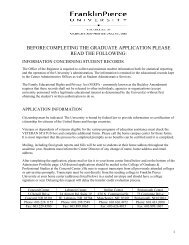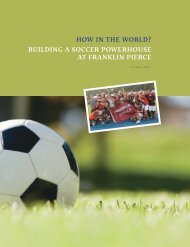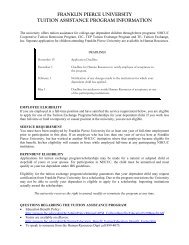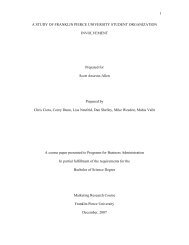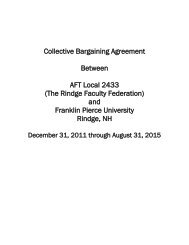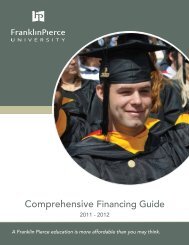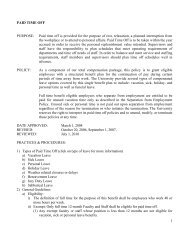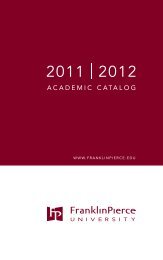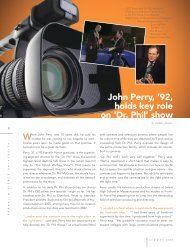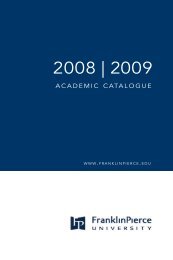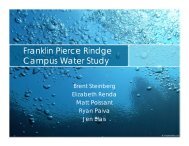THE MAGAZINE OF FRANKLIN PIERCE UNIVERSITY spring 2013
THE MAGAZINE OF FRANKLIN PIERCE UNIVERSITY spring 2013
THE MAGAZINE OF FRANKLIN PIERCE UNIVERSITY spring 2013
You also want an ePaper? Increase the reach of your titles
YUMPU automatically turns print PDFs into web optimized ePapers that Google loves.
Roman Catholic Church (and secularism).Kelsey was able to easily identify threedistinct ways of accounting for the law:ones that were anthropological, feminist,and constructivist (historical/political).As we progressed with our readings andweekly meetings, I introduced Kelsey tothe second aspect of our project whichentailed our moving to a meta-level ofthinking about the material. I gave Kelseya two-page AAC&U handout, and overthe months we worked and reworkedthe material applying the concepts to thedescriptive materials we were assembling.We picked apart the definition of criticalthinking, reviewed the glossary terms, andfound examples of each in the material onFrance’s new law.An example of a particularly long andinvolved conversation concerned one ofthe glossary terms. “Ambiguity,” whichis defined by AAC&U as “informationthat may be interpreted in more thanone way” had particular relevance to us. Itcertainly informed our discussion of theveil (hijab) which means radically differentthings to various groups and thinkers.With a close reading of the texts, Kelseyand I found that it is difficult to lump evenall feminists together.Some see ‘covering’ in a negative light,as a custom associated with traditional,static cultures in comparison to modern,dynamic cultures, where women’s rightsare favored. Other more culturallyrelativistic feminists explain ‘covering’ in acultural context as a way in which Muslimwomen express modesty and respect forthose socially important to them. Yeta third group applies a historicperspective, introducing informationabout the bitter wars between the NorthAfrican colonies and France, and therole veiled Muslim women played inespionage. One group sees hijabas oppressive and antithetical to whatthe modern French Republic stands for,another views it as a beautiful artifactand valued tradition that has a roleto play in any modern society thatallows for diversity. Still a third sees it asan expression of political resistance andanti-Western sentiment. And that wasjust those thinkers we grouped in thefeminist camp!The combined use of the materialsfrom the AAC&U, the application ofthe concepts to the material at hand,and our weekly conversations aboutmeta-level thinking bore fruit. Overtime I saw Kelsey’s growing awarenessof how knowledge is constructedand of what it means to be part ofan academic community.One of the important criteria of criticalthinking involves logical reasoning. Thisability, of course, lies at the heart of criticalthinking, and yet many college studentsdo not easily reason logically. Providingexamples, developing exercises of logicalreasoning, and then modeling for thestudent how to use this kind of reasoningin the thesis process may strengthenthe student’s ability when they areparticularly receptive.The dimension of self-reflection must alsobe added to the thesis process. Having thestudent write “before” and “after” essaysaddressing specific questions, such as howdid their assumptions about the thesisquestion change over time, will help themto understand how they have intellectuallygrown through the year-long process ofthesis research and production.The annual Academic Showcaseis a venue where students canshare their hard work with thelarger community.April 14-19, <strong>2013</strong>Rindge campusLeft to right: Kelsey Keegan ’13 and Prof. Picchi Ryan Tracy ’12 and Prof. Brezovec Senior Lecturer Cronin and Sheryal Delieto ’13www.franklinpierce.edu 9



